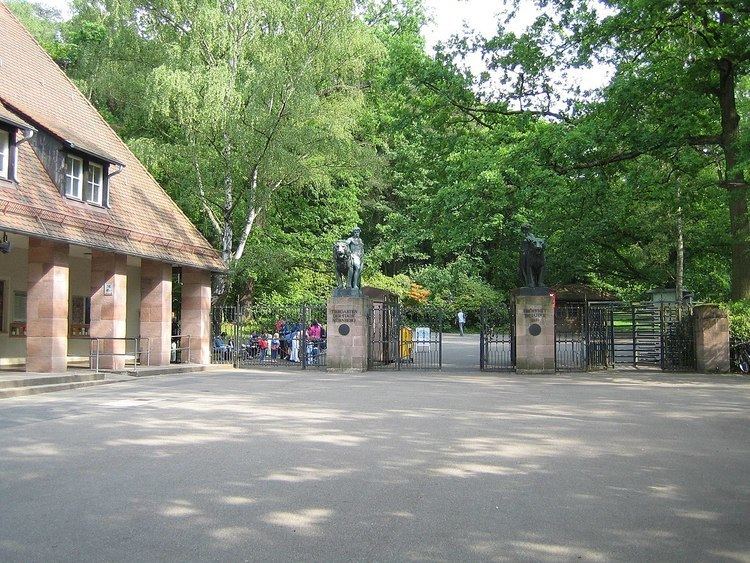Date opened 11 May 1912 No. of species 300 | Opened 11 May 1912 Phone +49 911 54546 | |
 | ||
Land area 67 hectares (170 acres) Address Am Tiergarten 30, 90480 Nürnberg, Germany Hours Open today · 9AM–5PMTuesday9AM–5PMWednesday9AM–5PMThursday9AM–5PMFriday9AM–5PMSaturday9AM–5PMSunday9AM–5PMMonday9AM–5PMSuggest an edit Profiles | ||
Full hd impressionen aus dem tiergarten n rnberg impressions from nuremberg zoo
Nuremberg Zoo (German: Tiergarten Nürnberg) is a zoo located in the Nuremberg Reichswald ("imperial forest"), southeast of Nuremberg, Germany. With an area of 67 hectares (170 acres), approximately 300 animal species are kept by the zoo.
Contents
- Full hd impressionen aus dem tiergarten n rnberg impressions from nuremberg zoo
- Nuremberg zoo in 4k tiergarten n rnberg samsung nx1 uhd
- In the Middle Ages
- 20th century
- Today
- Animals
- Literature
- References
Nuremberg zoo in 4k tiergarten n rnberg samsung nx1 uhd
In the Middle Ages
The tradition of zoos in Nuremberg goes back to the Middle Ages. However the only indications of a zoo maintained by the local nobility, the Burgraves, take the form of certain place names, such as the Zoo Gate (Tiergärtner Tor) and the adjoining Zoo Square (Tiergärtnertorplatz). This preserve stretched as far as the so-called Johannisfelder (today: St. Johannis) and the Rohlederersgarten (today the site of the Klinikum Nord). One can only speculate about the use made of the park.
20th century
The Nuremberg Zoo was founded on 11 May 1912 on the site of the Bavarian State Exhibition at the Luitpoldhain. After The Nazis seized power, the zoo had to give way for the Reichsparteitagsgelände at the Dutzendteich and was closed in February 1939. In May 1939, the new zoo was opened in the Reichswald at the Schmausenbuck. It was almost completely destroyed after World War II and rebuilt at the end of the 1950s.
Today
With 67 hectares (170 acres), it is one of the largest European zoos. Typical are large, natural enclosures, which are embedded in a landscape of forests and stone pits. More than one million visitors are counted every year. Many new enclosures, e.g., for gorillas, snow leopards and polar bears, were built in recent years.
Flocke, a captive-born polar bear who was born at the zoo in December 2007, bcame a popular tourist attraction and an international celebrity after a controversial decision to remove her from her mother and raise her by hand. Flocke has since been "adopted" by United Nations Environment Programme chief Achim Steiner.
Animals
The zoo has Asiatic lions and Siberian tigers, which live in former stone pits. The inner cages of both large cat species are behind a rock face and can be visited only after entering the house through a tunnel. Other carnivores are snow leopards, polar bears, Syrian brown bears, and maned wolves. The zoo is also successful in breeding South African cheetahs. Further attractions are Common bottlenose dolphins, Indian rhinoceroses, Malayan tapirs, lowland gorillas, California sea lions and manatees.
Many hooved mammals, like reticulated giraffes, Somali wild asses, Père David's deer, European and American bison, African buffalo, plains zebras and Turkmenian kulans live in large enclosures, which are embedded in the forested, hilly landscape. Beautiful ponds are home to a variety of water birds.
